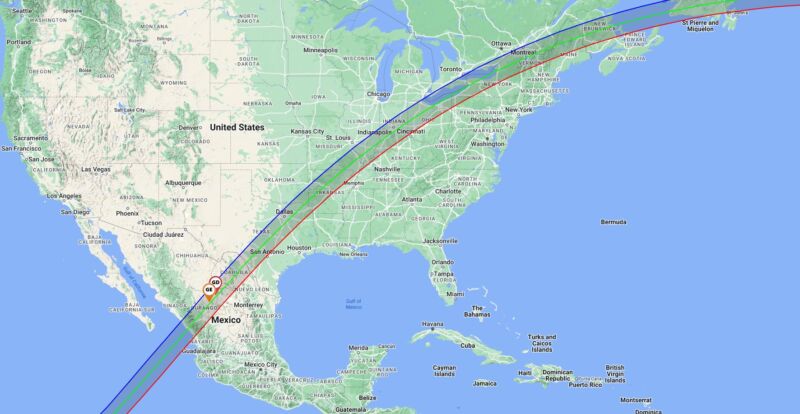
National Solar Observatory
If you enter “how to see the eclipse” into your favorite search engine, you’re bound to see thousands—millions?—of helpful guides. Some of these are extremely detailed and thorough, almost as if the author were getting paid by the word or augmented by AI.
In reality, seeing a solar eclipse is just about the easiest thing one can do in one’s life. Like, it’s difficult to think of anything else that has the greatest reward-lowest effort ratio in life. You just need to know a couple of things. For the sake of simplicity, here is Ars’ four-step guide to having a four-star eclipse-viewing experience. Steps are listed in order of ascending importance.
Step 1: Identify the path of totality. This is where the total solar eclipse will be visible on April 8. The National Solar Observatory has a good map here. Click on the map to get exact timing. It’s time and place sorted.
Step 2: Obtain solar eclipse glasses. These will be for sale everywhere, but don’t forget them, and make sure they’re ISO certified so your eyes don’t get fried. A pair should cost about $2. You don’t need to pay more than that.
Step 3: Check the weather forecast. This is the second-most important step, after step 4. Seriously, nothing sucks worse than an eclipse with cloudy skies. (Well, an eclipse with cloudy skies and a car wreck on the way home sucks worse, so drive carefully.) Generally, the further southwest one goes on the path of totality, the greater the chance of clear skies. But that’s climatology, not weather forecasting. As a meteorologist I’m watching this closely, but it is still way too early to make a sensible forecast for which locations will see clear skies and which ones will see cloudy two weeks from now. We should have a better sense of things in about a week, especially for areas where high pressure will dominate. But for some locations we may not really have a good handle on the forecast for days, or even hours, before totality. Yes, cloud cover can be that tricky.
Step 4: Look up.
That’s it. Really. You can go to a special eclipse party to see it, but the experience is going to be the same whether you’re parked alongside a rural road in Arkansas or watching with thousands of friends in Indianapolis.
In reality, a total solar eclipse is probably going to be the most spectacular celestial event most of us see in our lifetimes. Certainly, there could be more spectacular ones. A supernova within 100 light-years of Earth would be amazing. Witnessing a large asteroid streaking through Earth’s atmosphere before impact would be incredible.
Unfortunately, those would also be lethal.
